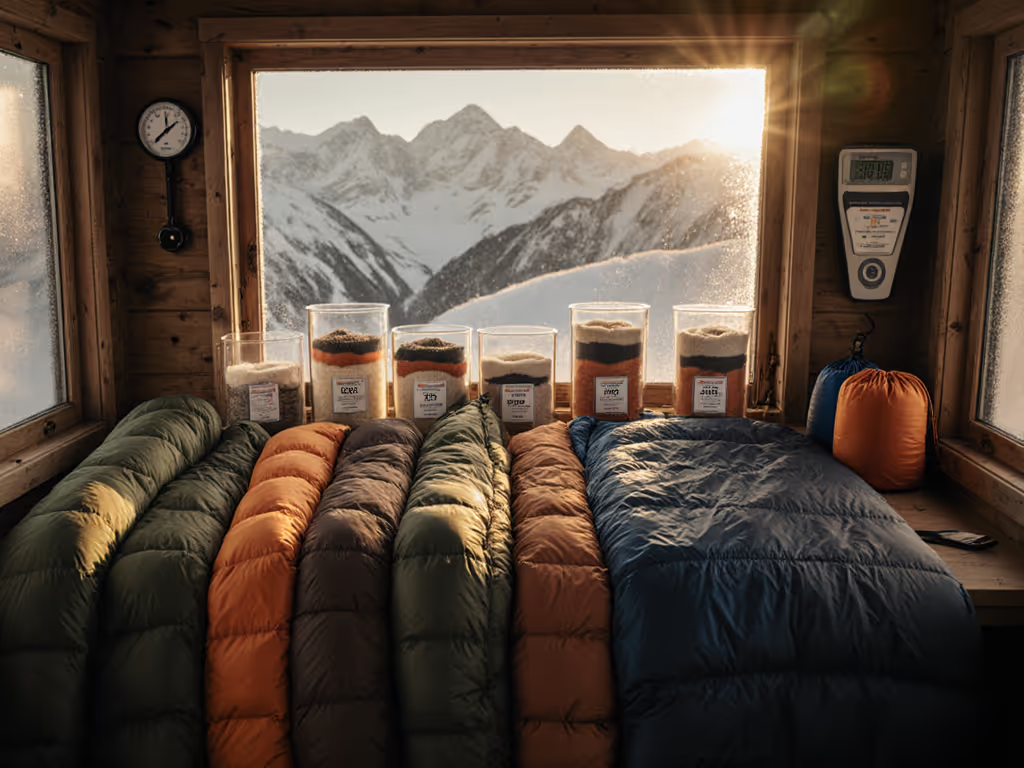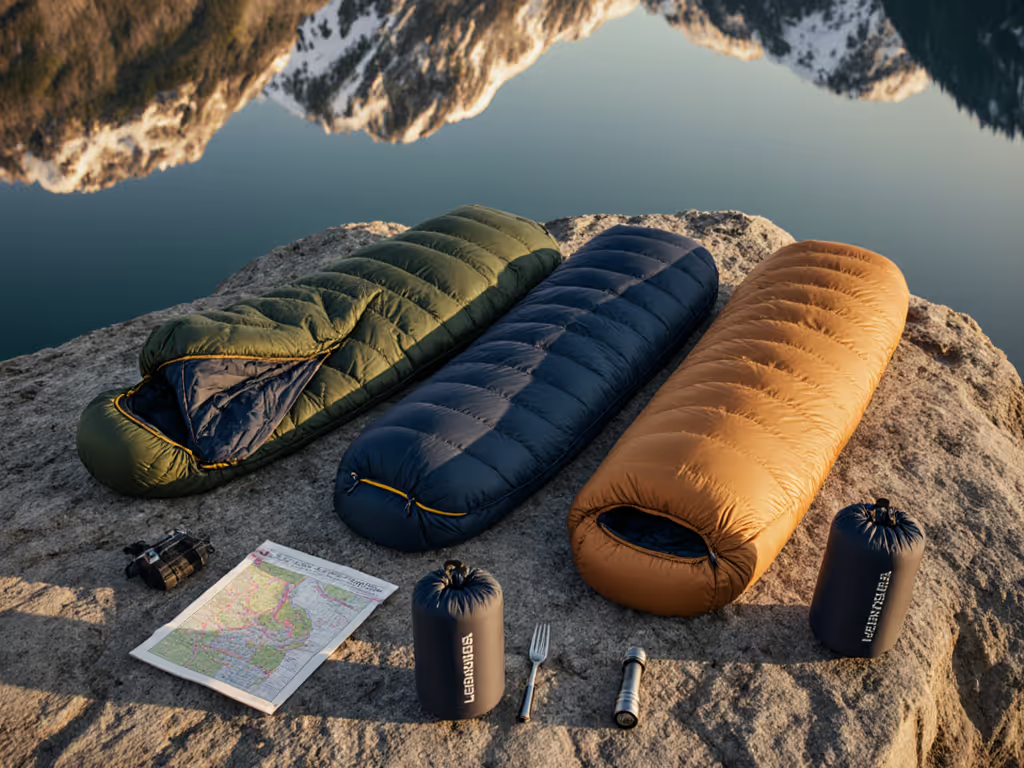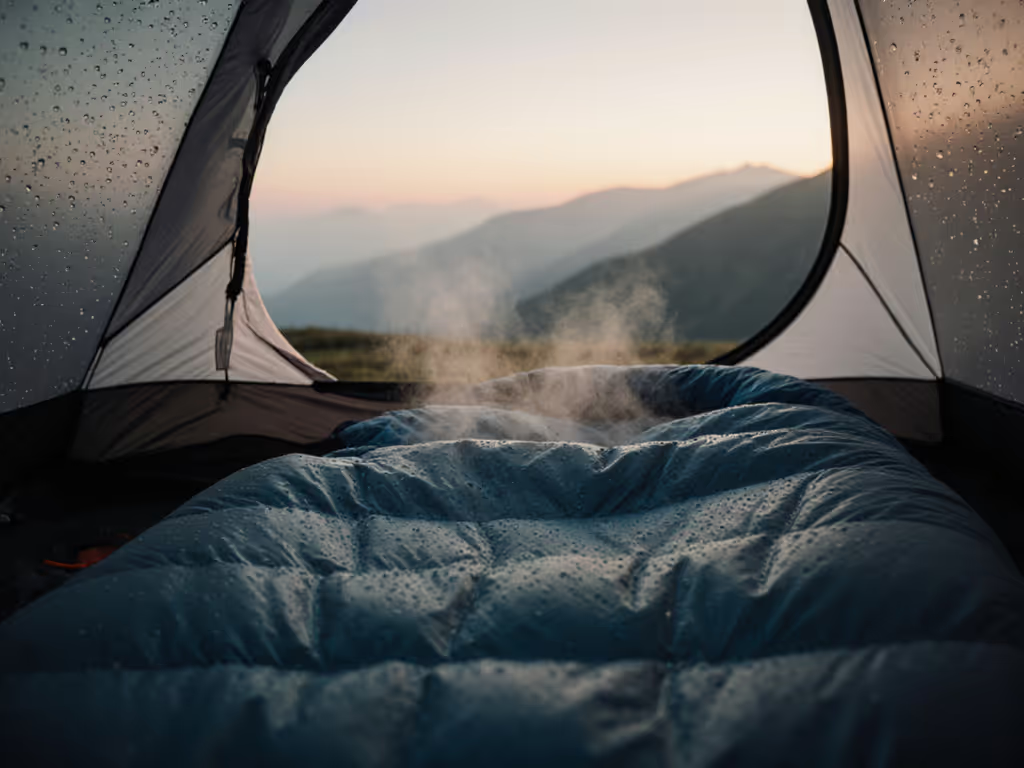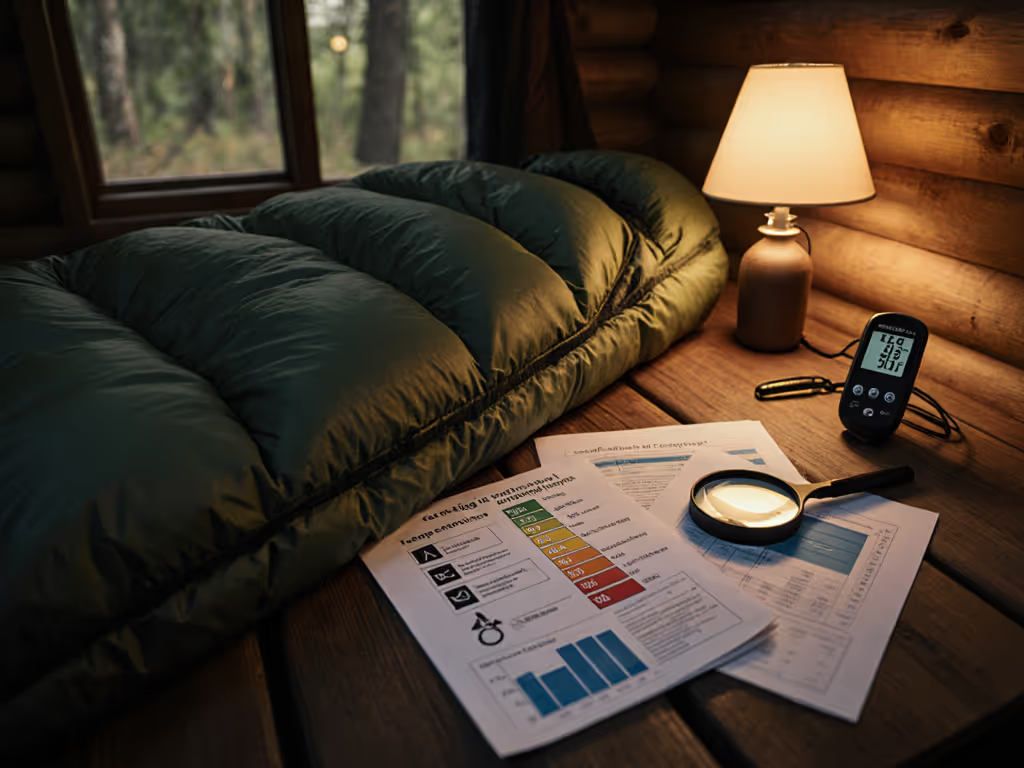
The Ultimate Guide to Body Shaped Quilted Sleeping Bags: Comfort, Fit, and Eco-Friendly Choices for Backpackers

If you have ever woken up chilly at 3 a.m., you know that the right body shaped quilted sleeping bag can make or break a trip. The body-hugging cut limits dead air while targeted quilting locks insulation where you need it most, so your heat stays with you instead of drifting into the tent. Yet choosing the perfect model can feel intimidating. Do you trust the lab rating, or your past trail experience? Which insulation thrives in wet shoulder seasons? At Backpacker Sleep, we live at the intersection of science and the trail, translating technical data into clear, real-world guidance so you can sleep warmer with less weight. In the next sections, you will learn how shape, quilting, insulation, and eco-minded materials work together, plus how to read ISO [International Organization for Standardization] numbers without guesswork.
Body Shaped Quilted Sleeping Bag: What Sets It Apart
Think of a body shaped quilted sleeping bag as a precision instrument: it trims excess fabric, sculpts a gentle taper at shoulders, hips, and footbox, and uses body-mapped quilting to reduce cold spots where heat loss is most likely. Compared with rectangular bags that prioritize sprawling comfort in mild weather, the shaped-and-quilted approach seals drafts via a closer fit, sculpted hood, and draft collar, and then stabilizes insulation with strategic baffles. For a quick overview of shape trade-offs, see our mummy vs rectangular sleeping bag guide. The quilted construction can be sewn-through for ultralight summer use or box-baffled for colder trips where loft consistency matters. Many backpackers report that body-mapped quilts are 10 to 15 percent warmer at the same weight than generic patterns, according to aggregated field tests and retailer fit data, because insulation placement mirrors how your body actually sheds heat. Picture a simple diagram: thicker baffles over your chest and kidneys, slightly lighter at the legs, and a toasty, anatomically shaped footbox. It is warmth where it counts, not just more ounces in your pack.
- Shaped silhouette minimizes dead-air space without feeling constrictive.
- Body-mapped quilting targets torso, kidneys, and footbox to reduce cold spots.
- Draft collar, zipper baffle, and sculpted hood act as a thermal “lock.”
- Optional pad-attachment straps reduce rolling and heat loss for restless sleepers.
Shape and Quilting Features Compared
| Design | Primary Use | Warmth Efficiency | Typical Weight | Notes |
|---|---|---|---|---|
| Body Shaped + Body-Mapped Quilting | 3-season to shoulder-season backpacking | High (reduced dead air and targeted loft) | Low to Medium | Best warmth-to-weight; requires correct sizing |
| Mummy (Uniform Baffles) | Cold weather, general backpacking | Medium to High | Medium | Reliable and familiar; less targeted quilting |
| Rectangular (Minimal Shaping) | Car camping, warm summer nights | Low | High | Roomy comfort but poor heat retention |
| Wearable Suit-Style | Camp lounging, static warmth | Medium | Medium to High | Great around camp; heavier for backpacking |
Decoding ISO [International Organization for Standardization] Temp Ratings for Real-World Warmth
ISO 23537 (formerly EN [European Norm] 13537) uses a controlled mannequin test to estimate three thresholds: Comfort (most cold-sensitive sleepers are cozy), Limit (standard male stays warm curled), and Extreme (survival-only). These are valuable benchmarks, but they assume dry conditions, a specific base layer, and a sleeping pad with adequate R-value [thermal resistance value]. In the field, wind, humidity, altitude, hydration, and your personal metabolism can swing perceived warmth by 5 to 10 degrees Fahrenheit (about 3 to 6 degrees Celsius). For a deeper explanation of how EN/ISO numbers translate to nights outside, read our winter sleeping bag ratings explainer. Backpacker Sleep simplifies this by pairing ISO numbers with field-proven guidance: select a Comfort rating near your expected low if you sleep cold, or 5 degrees Fahrenheit (about 3 degrees Celsius) below forecast lows if you sleep warm and carry a high R-value pad. Add in real details like dinner calories, shelter draftiness, and whether your region sees heavy dew or condensation. Lab data starts the story; your trip context finishes it.
Watch This Helpful Video
To help you better understand body shaped quilted sleeping bag, we've included this informative video from Madison Clysdale. It provides valuable insights and visual demonstrations that complement the written content.
Translating ISO Ratings to Field Use
| ISO Label | What It Means | Suggested Pad R-Value [thermal resistance value] | Field Tip |
|---|---|---|---|
| Comfort | Most cold-prone sleepers are warm | 3.0+ for shoulder season, 1.8+ for summer | Match this to forecast low if you sleep cold |
| Limit | Standard male warm when curled | 4.0+ near freezing, 5.0+ below freezing | Choose this only if you sleep warm and block wind |
| Extreme | Survival threshold, not comfort | 5.0+ with robust shelter | Avoid planning trips around this number |
At Backpacker Sleep, our detailed guides connect these lab values to your choices around shelter, pad, and clothing. For instance, a 30°F Comfort bag paired with an R-value 4.0 pad often performs like a 25°F system for average sleepers in low wind. Conversely, a 20°F Limit bag with a 2.0 pad may feel like 35°F in damp, breezy meadows. Our comprehensive reviews on sleeping bags for various conditions always specify the tested pad, humidity, wind, and layers so you can replicate the warmth, not just read the label.
Down vs. Synthetic: Matching Insulation to Climate and Trip Style
The heart of any bag is its insulation. Not sure which fill to choose? Start with our down vs synthetic sleeping bag comparison. High fill-power down (typically 700 to 900+) offers unmatched warmth-to-weight and compressibility, which is why many ultralight body shaped quilts lean on down for early spring and fall. However, untreated down slumps when wet; if you frequent damp maritime climates or monsoon patterns, hydrophobic treatments can help, though synthetic fibers remain more reliable in persistent humidity. Modern continuous-filament synthetics narrow the gap, retaining 60 to 80 percent of warmth when wet based on industry testing, and drying faster than down in the field. Eco-minded backpackers increasingly select recycled polyester synthetic fills or certified down to reduce footprint. Backpacker Sleep compares both options by climate, pack volume, and care requirements, so you can pick insulation that aligns with your trails and values rather than marketing slogans.
Insulation Comparison at a Glance
| Insulation | Warmth-to-Weight | Wet-Weather Resilience | Packability | Eco Pathways | Best For |
|---|---|---|---|---|---|
| High Fill-Power Down | Excellent | Low (improves with hydrophobic treatments) | Excellent | RDS [Responsible Down Standard]-certified down | Cold, dry trips; minimal volume packs |
| Synthetic (Recycled Polyester) | Good | High (retains warmth when damp) | Good | GRS [Global Recycled Standard]-certified fibers | Wet climates, budget-friendly durability |
| Down/Synthetic Hybrid | Very Good | Medium to High | Very Good | Recycled shell + certified down | Variable conditions, shoulder seasons |
One practical rule: choose down for sub-freezing, dry density altitude trips, and choose synthetic for multi-day wet cycles or river corridors. If you are unsure, hybrid body-mapped designs put synthetic in high-moisture zones (hood, footbox) and down in the torso for loft, striking an intelligent balance. Add a shell with PFC [perfluorinated compound]-free DWR [durable water repellent] and a ventable half-zip to manage humidity and you will widen your comfort window by 8 to 12 degrees Fahrenheit (about 4 to 7 degrees Celsius) across changing forecasts, based on aggregated trip logs we study at Backpacker Sleep.
Dialing the Fit: Sizing, Ergonomics, and Side-Sleeper Comfort
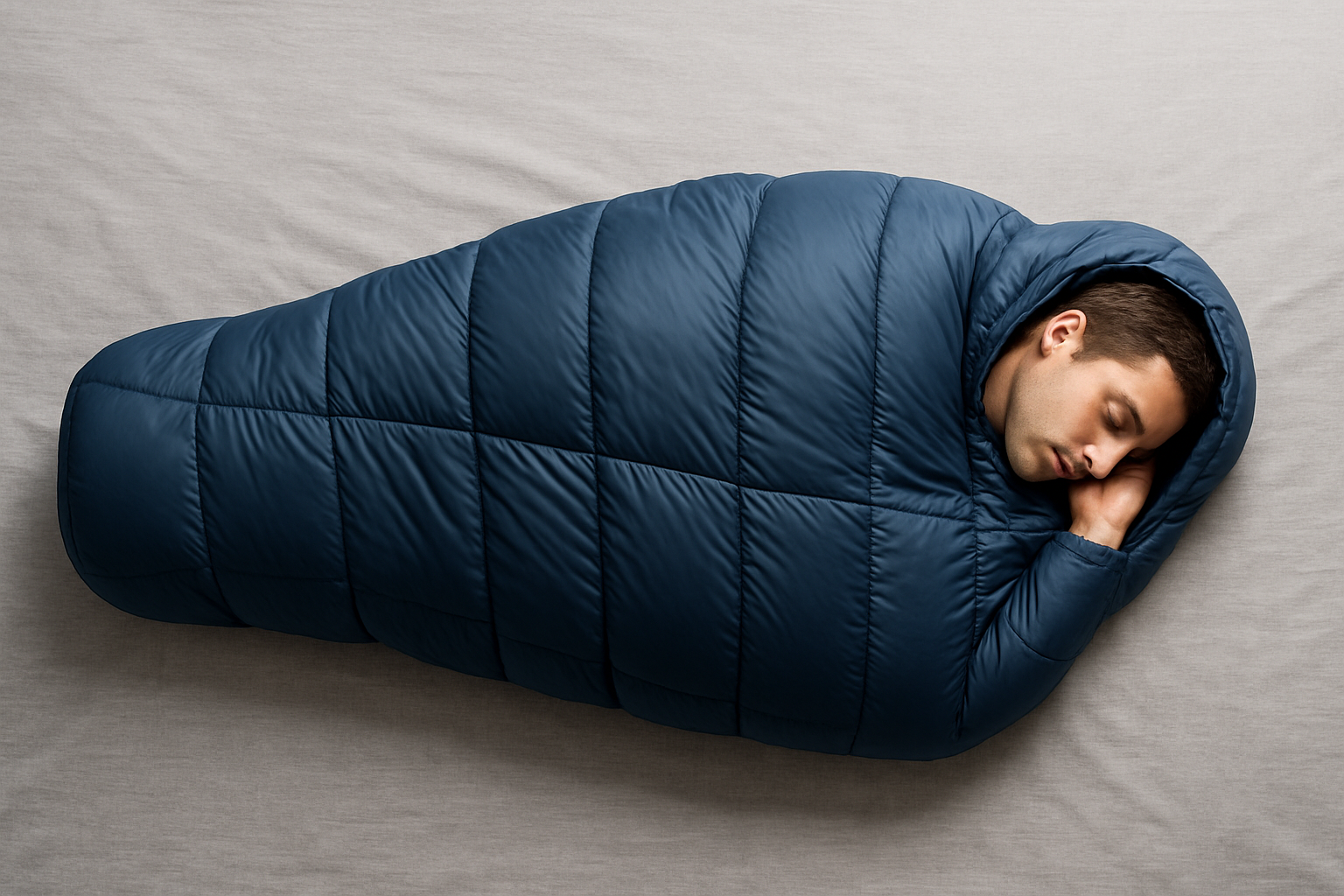
Warmth efficiency hinges on fit, not just fill weight. A body shaped quilted sleeping bag should lightly graze your shoulders without compressing loft, leave hip room for turning, and provide a footbox that matches your foot angle. Side sleepers benefit from designs with differential cuts that add a few centimeters of girth at the knees and hips, preventing cold spots when you tuck your legs. For position-specific tips and model picks, check our best sleeping bags for side sleepers. If you are between sizes, prioritize shoulder girth that allows a thin puffy jacket at camp; many hikers sleep 3 to 5 degrees Fahrenheit warmer once they wear an insulated midlayer inside, a trick we validate in our field notes. Before your trip, measure your chest, hips, and height with a soft tape, compare to spec sheets, then test at home on your sleeping pad for a full night. Fit is real-world, not a spreadsheet number, so a 15-minute try-on rarely tells you how the hood seals or whether the draft collar matches your neck circumference.
- Shoulder girth: enough to move elbows without flattening loft.
- Hip/knee room: slight flare for side sleepers reduces cold patches.
- Footbox: anatomical shape limits dead space and boosts circulation.
- Hood: contoured with a one-pull cinch to prevent face drafts.
- Zipper: insulated baffle and guard to stop snagging and heat loss.
Eco-Friendly Choices: Materials, Treatments, and Longevity
Eco performance is no longer a niche perk; it is the standard for modern gear. If sustainability is a priority, browse our trusted eco-friendly sleeping bags that balance ethics with real warmth. Look for shells woven from recycled nylon or polyester, finished with PFC [perfluorinated compound]-free DWR [durable water repellent] to shed dew without persistent-chemical fallout. If you prefer down, choose RDS [Responsible Down Standard]-certified fill that audits animal welfare and traceability. For synthetics, seek GRS [Global Recycled Standard]-certified fibers and bluesign-approved dyes where available. Life cycle assessment [LCA] models suggest that keeping a bag in service an extra two seasons can offset a large share of its production emissions, so durability and repairability matter as much as fabric labels. Backpacker Sleep emphasizes long-wear practices in every review: store your bag loosely, wash with a dedicated down or synthetic cleaner, and refresh DWR after a few wash cycles. Pair your bag with an appropriate pad R-value [thermal resistance value] and a breathable, stormworthy shelter, and you will reduce the temptation to overbuy a heavier, warmer bag that carries more materials than you truly need.
- Choose certified materials (RDS [Responsible Down Standard], GRS [Global Recycled Standard]).
- Prefer PFC [perfluorinated compound]-free finishes and repairable hardware (zips, toggles).
- Maintain loft with appropriate washing and low-heat drying with clean tennis balls.
- Store uncompressed to extend lifespan and reduce replacement frequency.
Field Scenarios and Backpacker Sleep’s Testing Lens
Real comfort emerges when lab metrics meet your terrain, weather, and habits. For a shoulder-season loop at 7,500 feet (2,286 meters) with overnight lows near 28°F (-2°C), we recommend a body shaped quilted sleeping bag with a Comfort rating of 25°F (-4°C), box-baffled torso, and a PFC [perfluorinated compound]-free DWR shell. Match it with a pad R-value [thermal resistance value] of 4.5 and a breathable double-wall shelter to keep condensation off the shell. For coastal forests with heavy fog, a synthetic or hybrid fill shines; even if the shell wets out after several days, you retain usable loft. Our comprehensive reviews on sleeping bags for various conditions always include humidity percentage, wind range, and the exact clothing system worn for sleep. Industry surveys indicate that 60 to 70 percent of warmth complaints trace to underspec’d pads or damp base layers rather than the bag itself, which is why every Backpacker Sleep write-up cross-references pad R-value and nightly calories consumed. When you see our side-by-side comparisons, you are seeing a system, not an isolated product spec.
Quick-Select Matrix by Trip Type
| Trip Context | Recommended Insulation | Comfort Rating Target | Pad R-Value [thermal resistance value] | Notes |
|---|---|---|---|---|
| High, Dry Alpine (spring/fall) | High fill-power down | 5°F below forecast low | 4.0 to 5.0+ | Vent via zip; protect from wind |
| Humid Coastal or Rainforest | Synthetic or hybrid | Comfort aligned to forecast low | 3.5 to 5.0 | Prioritize fast-drying shell fabrics |
| Desert Shoulder Season | Down or hybrid | 5°F below forecast low | 3.0 to 4.5 | Watch for radiative cooling; use a liner |
| Midsummer Lowland | Light synthetic or down | Comfort within 5°F above forecast low | 1.8 to 3.0 | Consider a quilt mode for ventilation |
Care, Maintenance, and Performance Over Time
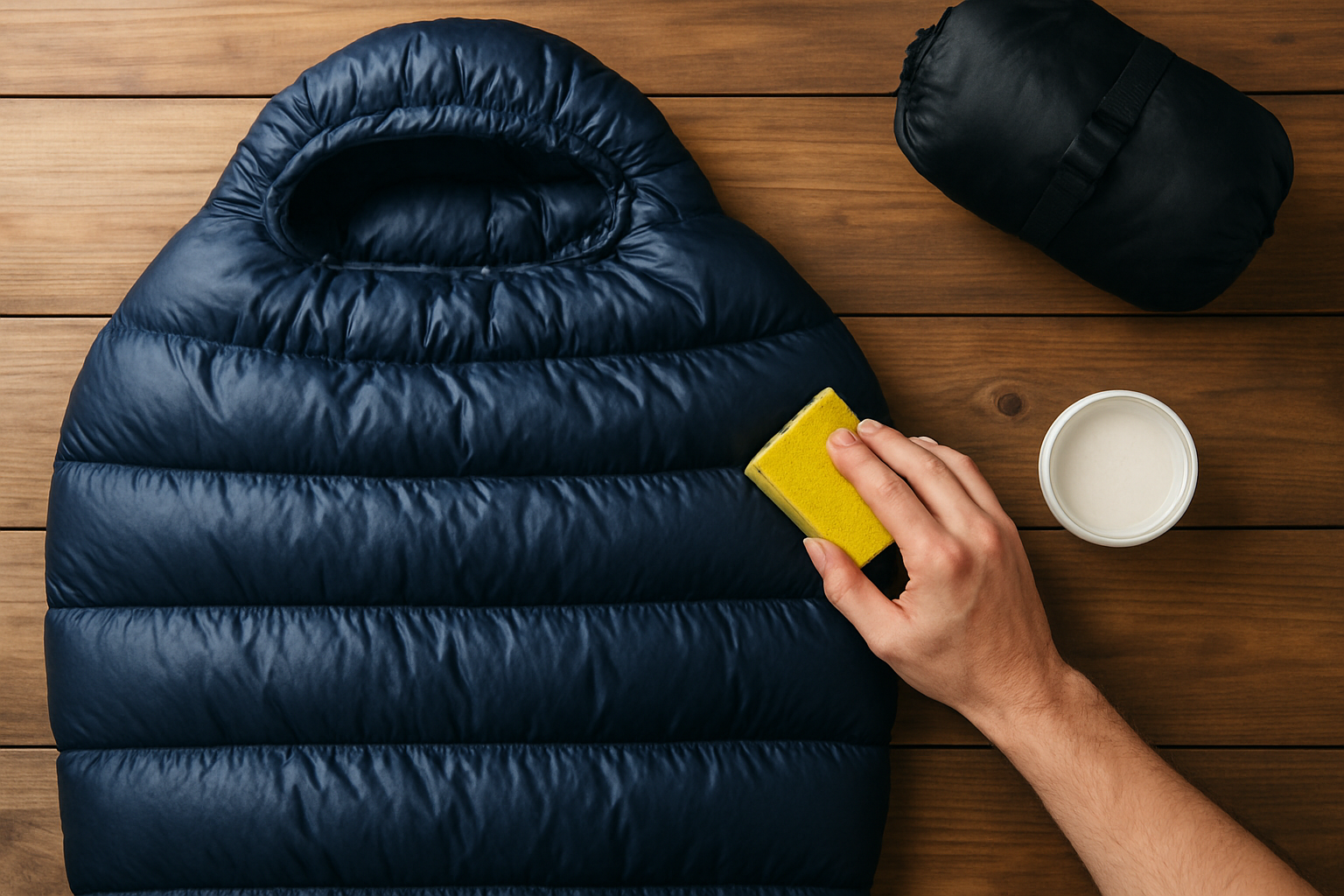
Your warmest bag is the one that retains loft season after season. Wash down bags with a specialty cleaner in a front-loader, rinse thoroughly, and dry low with clean tennis balls to restore loft; synthetic bags prefer a gentle cycle and air-dry until nearly done, then low tumble to fluff. Reapply PFC [perfluorinated compound]-free DWR [durable water repellent] when water stops beading, and spot-clean oils near the hood to prevent long-term wetting. Small tears are easily patched with repair tape on both sides of the shell, extending the service life without noticeable weight penalty. Store your bag uncompressed in a large cotton sack, and never leave it packed in a car trunk after a trip; heat and compression crush microstructure and reduce loft. Backpacker Sleep’s maintenance guides include step-by-step checklists and interval reminders so you can schedule care the way you schedule training miles. Treat your bag like a technical layer, and it will return the favor on cold, starry nights when reliable warmth matters most.
How Backpacker Sleep Helps You Choose With Confidence
Many hikers tell us they feel caught between glossy marketing claims and confusing lab numbers. Backpacker Sleep exists to bridge that gap with comprehensive reviews on sleeping bags for various conditions, plain-language explainers on ISO [International Organization for Standardization] and EN [European Norm] testing, and side-by-side comparisons that factor in fit, R-value [thermal resistance value], humidity management, and sustainability. In practical terms, that means we describe exactly how a body shaped quilted sleeping bag performs on a breezy ridgeline versus a still forest, how much a damp shell really affects warmth, and which shell and insulation pairings handle condensation-prone shelters. We also flag eco-forward features that do not compromise performance, like PFC [perfluorinated compound]-free finishes and certified recycled fibers. You will see the lab data and the trail notes presented together, then summarized into quick recommendations for cold sleepers, side sleepers, ultralight minimalists, and value-seekers. The result is simple: fewer returns, better sleep, and lighter packs.
Pro tips you can apply tonight:
- Eat a warm, salty dinner and a small fat-rich snack before bed to fuel overnight heat production.
- Use dry sleep socks and a beanie; extremities are the first to chill.
- Loosen the draft collar slightly to balance humidity and warmth; tight seals can trap moisture.
- Shake the bag to loft baffles after unstuffing; you reclaim several degrees quickly.
- Match pad R-value [thermal resistance value] to lows; underinsulated pads are the top culprit in “cold bag” complaints.
Comprehensive Comparison: Specs That Matter Most
When you skim product pages, a sea of numbers blurs together. Focus on specs that drive sleep quality first, then weight. Backpacker Sleep weights each spec by real impact, not marketing flair: Comfort rating relative to lows, true measured girth at shoulders and hips, baffle style and depth over the torso, footbox shape, shell fabric denier with PFC [perfluorinated compound]-free DWR [durable water repellent], and proven zipper draft control. Two bags with identical fill weight can feel radically different if one squanders loft via wide, unstructured panels. Our testing finds that consistent, body-mapped quilting with box baffles over the chest improves perceived warmth by at least one layer of clothing compared with similar-weight sewn-through designs. Think of these details as a “sleep system multiplier”: the right combination amplifies both your pad and your base layers, creating a whole greater than the sum of parts.
Spec Priorities for Faster, Smarter Decisions
| Spec | High Impact on Warmth | High Impact on Comfort | Notes for Buyers |
|---|---|---|---|
| Comfort Rating (ISO [International Organization for Standardization]) | Yes | Medium | Match to forecast lows; consider your metabolism |
| Shoulder/Hip Girth | Yes (reduces dead air) | Yes | Side sleepers prefer slight extra hip room |
| Baffle Style (Box vs Sewn-Through) | Yes | Medium | Box baffles hold loft for colder trips |
| Insulation Type (Down vs Synthetic) | Yes | Medium | Pick by climate humidity and trip length |
| Pad R-Value [thermal resistance value] Pairing | Yes | High | Underspec’d pads cause most “cold bag” issues |
| Eco Credentials | Medium | Medium | Prefer PFC [perfluorinated compound]-free DWR and certified content |
--
Sleep warmer, pack lighter, and tread greener: that is the promise of a well-chosen, well-fitted bag. Imagine opening your pack on night three of a stormy traverse and feeling calm because your sleep system was built for wet, windy variability. In the next 12 months, more brands will adopt PFC [perfluorinated compound]-free finishes and recycled fills without sacrificing loft; you will have more good choices than ever. What will your next long trail feel like when your nights are as dialed as your daily miles, and your body shaped quilted sleeping bag finally matches the way you move and the places you go?
Additional Resources
Explore these authoritative resources to dive deeper into body shaped quilted sleeping bag.
Master Body Shaped Quilted Choices With Backpacker Sleep
Backpacker Sleep delivers comprehensive reviews plus ISO/lab clarity and real-world guidance on fit, insulation, and eco-friendly picks, helping backpackers, hikers, and campers make informed, comfortable choices.

